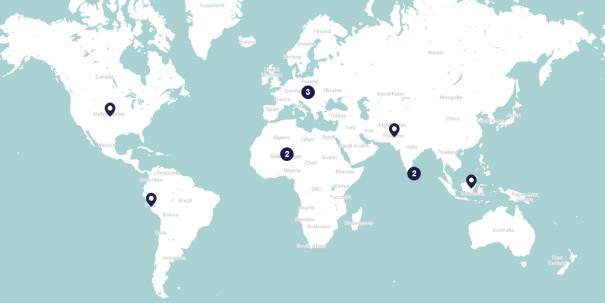
- Project summary
- 30 April 2019
Summary
The Saleema Initiative (2004-present) aims to promote long-term abandonment of female genital mutilation and cutting (FGM/C) through a contribution to changing social norms, attitudes, and intentions related to the practice. The Saleema Initiative was originally created in 2004 but was scaled-up to a national campaign in Sudan in 2014 and is still ongoing and has been scaled-up and adapted. It provides positive communication tools that support the protection of girls from genital cutting, particularly in the context of efforts to promote collective abandonment of the practice at community level. The broad objective is to change the way that people talk about female genital cutting by promoting wide usage of new positive terminology to describe the natural bodies of girls and women. The brand equity construct – identification with the Saleema brand and the benefits of FGM abandonment that it promotes – is hypothesized as the mediator of behaviour change. Saleema is based on a theoretical model of social norms and the potential to change those norms through creating an alternative narrative and identity for abandonment of the practice. Saleema also aims to stimulate new discussions about FGM/C at family and community levels – new both with regard to who talks to who (’talk pathways’) and the specific issues communicated about (’talk content’). The Initiative is supported by the Sudanese government that receives technical and financial assistance from UNICEF. Evaluation of the Initiative is being conducted by the George Washington University.
Social norms of interest
FGM/C, social acceptance of uncut girls, normative beliefs about the acceptability of being uncut
Project components
The intervention component involves campaign messaging and activities are targeted to the entire population with a primary focus on parents that are making decisions on FGM/C and a secondary focus on adolescent girls. The campaign includes community dialogue sessions, interpersonal communication in public facilities, coordination with other organisations, a mass media campaign, a social media campaign, and collective community action. The campaign primarily focused on messages of community cohesion, strength, and change to reject FGM norms. The research component consists of monitoring and evaluation that aims to evaluate the effectiveness of the initiative in reducing pro-FGM social norms and to examine the role of the Saleema social marketing and branding strategies in promoting changes in FGM social norms.
Measurement
Focus group discussion (FGD), questionnaire conducted annually over four years with scale, photovoice
Behavioural outcomes
FGM/C
Key findings
Higher doses of Saleema, measured through self-report and an exogenous measure of campaign event exposure from an independent monitoring system, are associated with improvements in FGM social norms. Controlling from demographic and community variables, self-reported exposure was positively associated with an improvement in a FGM social norms factor (coeff. = -0.329, p < .001). Additionally, increased Saleema event exposure predicted greater improvement in the social norms factor (coeff. = -0.146, p < .001). Saleema was effective in reducing pro-FGM social norms. It is a promising strategy and findings contribute to the growing literature on social norms approaches to behaviour change. The most common source of information or admiration is local leaders who are responsive to their community, media-based outlets, and discussions among community members. Participants had positive responses to the posters, yet there was a sizable group that supports FGM/C due to social stigma.

Back to the "Map of social norms-focused projects and measurement approaches"
- Countries / Regions:
- South Sudan
- Data collection methods:
- Focus group, Survey